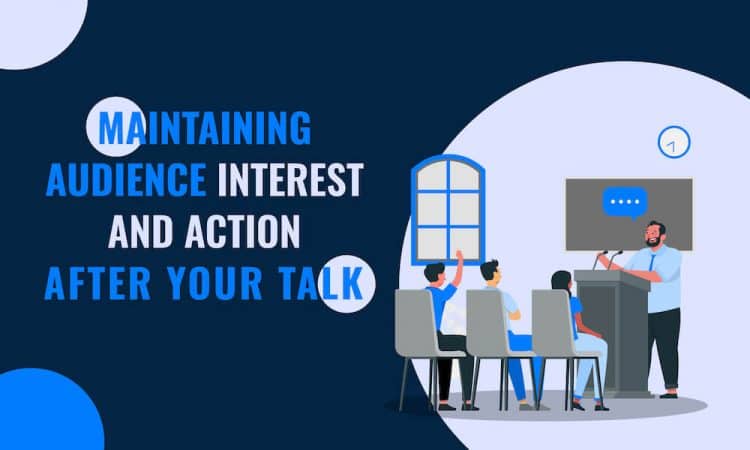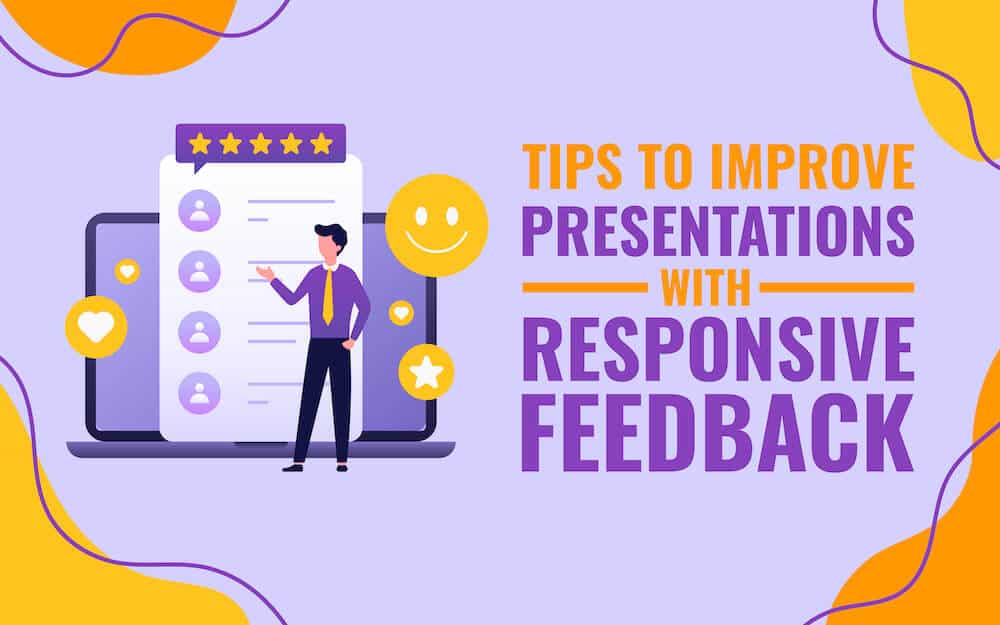Post-Presentation Engagement: Maintaining Audience Interest and Action After Your Talk

Congratulations! You have delivered a successful presentation, and the room is abuzz with positive energy, rounds of applause, and high-spirited attendees. Each of them is left in awe of your mesmerizing presentation and wishes to connect with you further.
But how would you do that? Would you go and meet each one of them personally, handing out cards and sharing contacts? Or would you craft a masterful strategy beforehand and devise it right after the event to ensure maximum retention?
Well, the latter sounds more strategic and well-put. In this article, we have covered some practical strategies that will help you keep your audience engaged and invested long after the applause has faded. Let us get going!
1. Harness the Power of Technology: Incorporate Q&A Platforms and Chatbots
Question and answer sessions are a great way to boost audience engagement and end the presentation on a thoughtful and interactive note. Beyond their ability to gather immediate audience responses, these discussions enable the participants to solve their queries and seek clarification on their doubts.
To make such sessions easier to conduct, you can curate a list of frequently asked questions and display them along with their answers on the screen. It will reduce the number of repeated questions and save time answering each question separately.
You can even incorporate a chatbot that can answer the queries of the audience in real time and allow your participants to remain invested throughout.
2. Go Beyond the Presentation Walls: Provide Access to Resources
Expanding the influence of your presentation goes beyond the confines of the physical event. By providing accessible and comprehensive resources, you empower attendees to delve deeper into the subject matter and gain valuable insights.
It can be done by creating a dedicated webpage for post-presentation resources, which could serve as a one-stop shop. Here, you can allow them to access blog posts, presentation slides, related documents, and supplementary materials.
For instance, if you’ve discussed a complex concept that requires further explanation, consider offering in-depth articles or case studies that provide a more nuanced understanding. You can create stunning research papers, use mind maps, or even elucidate with creatives such as roadmaps and timelines.
It will give your resources a polished look and increase your stature and credibility as a professional, leaving a positive impression on the audience.
3. Bring Them Under the Same Umbrella: Facilitate Networking
In today’s interconnected world, the value of networking can’t be overstated, and presentations serve as a natural catalyst for bringing like-minded individuals together. They not only draw people from similar backgrounds under the same umbrella but also allow them to connect with professionals from multiple other fields.
To accelerate such networking and enable your audience to form communities, you can commence by creating a social media post that provides a concise summary of the key takeaways and highlights from your talk. Encourage attendees to share their thoughts, insights, and experiences in the comments section. By opening up this virtual dialogue, you create an avenue for attendees to reflect on the presentation and offer their unique perspectives.
This approach not only keeps the momentum of your presentation going but also taps into the collective knowledge of your audience, facilitating deeper discussions.
To further enhance networking opportunities, consider creating a dedicated group or event page specifically for your presentation. This space can serve as a hub for ongoing conversations, resource sharing, and collaborations related to the presentation’s topic.
Actively participating in these discussions positions you as a moderator and thought leader in your field, fostering a sense of community among your audience and showcasing your commitment to facilitating meaningful connections beyond the event itself.
4. Get Creative on Social Media: Use a Hashtag
Let us walk back a few years. Do you remember the famous Ice Bucket Challenge that was conducted to raise awareness for ASL research and support? This challenge became such a huge global sensation because it was promoted with the help of its hashtag, “ #icebucketchallenge,” which caused it to trend immensely on social media platforms.
Thus, in this digital age, social media serves as a dynamic tool for extending the influence of your presentation. Crafting a unique hashtag is a strategic move that allows you to curate and track the online conversation surrounding your event. Encourage attendees to use this when sharing their thoughts, and ask them to post pictures and videos by incorporating it.
The event hashtag creates a virtual gathering and fosters a sense of belonging. To maximize the impact, consider using it in your presentation materials, such as slides or handouts. This visual cue reminds attendees to participate in the online conversation and ensures a consistent presence of the hashtag across various platforms.
By embracing social media as an extension of your presentation, you tap into the vast potential of these platforms to amplify your reach, encourage engagement, and foster a community that thrives long after the event has concluded.
5. Send Personalized Follow-Up Emails
The post-presentation follow-up email is a hidden gem in the realm of engagement strategies; however, it is often underestimated. This personalized communication offers a direct line to your audience’s inbox, allowing you to solidify the connections forged during the presentation.
Begin by thanking attendees for their time and engagement during the presentation. This genuine expression of gratitude sets a positive tone for the rest of the email. Summarize the core concepts, reinforce the main messages, and inspire them to take your desired action. You can even invite them to be a part of the next event, offer a discount on your services or products, etc.
6. Be Open to Suggestions: Seek Feedback and Change with It
As a presenter, the most important aspect is understanding how satisfied your audience was with the presentation. Were their expectations met, or did they leave with a disappointed heart? Were they happy with the way you conducted the session, or did they feel left out?
Well, to get answers to such questions and further improve your performance, it is crucial to circulate a feedback form and gather multiple viewpoints from the members. However, not all attendees might be willing to fill out the form due to multiple barriers. To ensure maximum responses, provide them with an incentive, such as free resources.
This gesture will make the participants feel as if you genuinely care about their opinions and enable them to look out for you even more.
Once you have collected and compiled the data, make sure to analyze it and mend your next presentation accordingly!
Conclusion
Presentations are a cornerstone of effective communication, but their potential impact doesn’t have to end when the projector turns off. The period after your talk provides a unique opportunity to engage your audience further, spark discussions, and drive actionable outcomes. Thus, we hope these tips and techniques help you master the post-presentation engagement and intrigue your audience even after the slides have concluded.



